Back
Best Soil Building Processes to Protect the Planet
04/04/2023 | Written by Kristen Boye
Sustainability
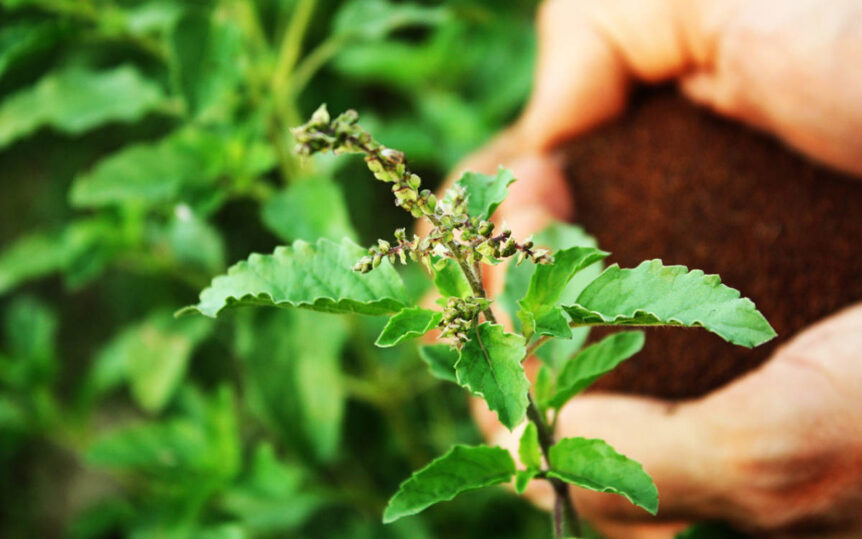
It can be argued that our most precious resource is the soil beneath our feet.
Unfortunately, various human activities have stressed our lands and soils to the point of becoming increasingly nonproductive, thus turning our soils into non-functional dirt in which nothing can grow.
Since our inception, Organic India has been aware of the negative impact human activity can impose on our agricultural lands and our planet’s ecosystems.
Because of this awareness, our mission has been to do everything possible to preserve and conserve this precious resource and to incorporate specific regenerative organic soil building processes that restore land to its optimum function.
In this article, you’ll get an insider’s look at what we’ve been doing on our herb farms for decades to support soil health, empower farmers, and create sustainable and regenerative ecosystems.
What is Regenerative Agriculture?
“Regenerative agriculture” is one of the latest buzzwords thrown around in farming and specific climate change spaces.
But what does this term actually mean?
According to the Regenerative Organic Alliance, an industry leader in which Organic India is a Land Ally, Regenerative Agriculture is “a collection of practices that focus on regenerating soil health and the full farm ecosystem.”
They go on to say, “In practice, regenerative organic agriculture can look like cover cropping, crop rotation, low- to no-till, compost, and zero use of persistent chemical pesticides and fertilizers.”
How does Organic India apply this to our farms? Read on to learn more about our specific soil building processes.
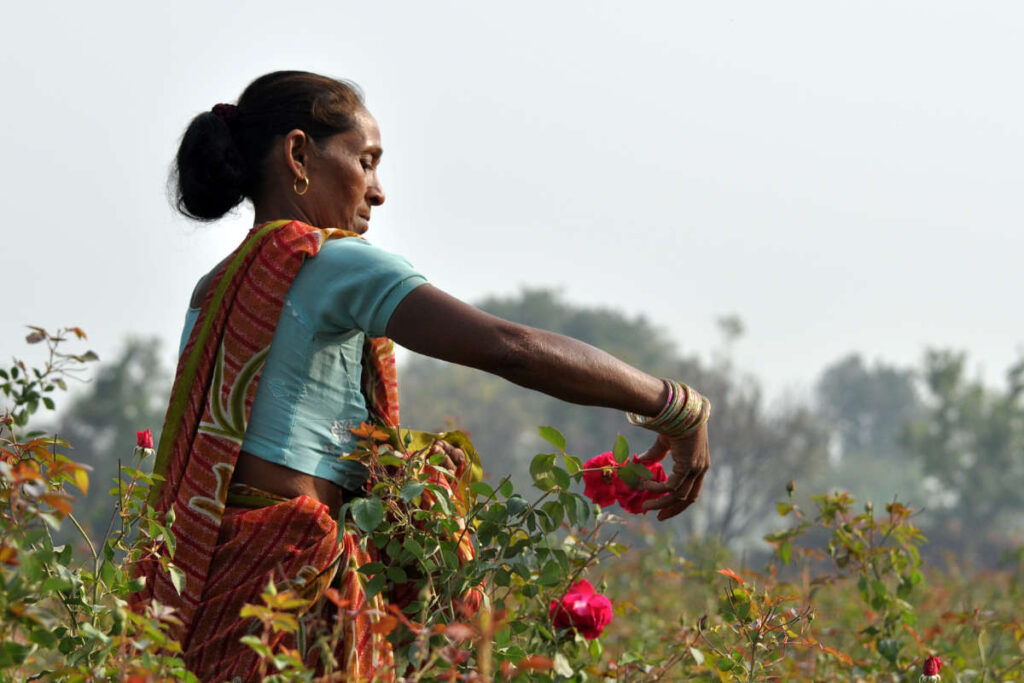
Best Soil Building Processes
To live in harmony with the earth, you can’t overlook the importance of protecting the soil where all herbs, spices, fruits, veggies, legumes, grains and other vibrant, life-giving foods are grown. These are some of the best soil building processes to protect the delicate balance and richness of soil.
1. Cover Crops and Crop Rotation
One of the foundational principles in regenerative agriculture is to keep something growing in the soil as long as possible to enhance soil health.
The reason is the longer you have plants in the ground the more sunlight you capture throughout the year resulting in the maximum amount of photosynthetic activity.
This is important because plants pull carbon dioxide out of the atmosphere and water from the ground.
Then through photosynthesis, they pull these molecules apart to release oxygen and make sugars (exudates) that are released into the soil to feed microbial life.
Microbial life, which includes bacteria, fungi, protozoa, nematodes, worms, etc., collaborates with the plant to form a necessary symbiosis or partnership.
These exudates feed soil microbes, and in response, microbial life reciprocates this gift from the plant by accessing and predigesting minerals and other nutrients to support the plant’s health.
What does all this have to do with cover crops?
Incorporating cover crops is an excellent way to ensure plants stay in the ground, even after the growing season.
These crops keep the ground covered while this exchange takes place, organic matter is built, soil structure is enhanced, thus preventing erosion, better water infiltration occurs, and water holding capacity is bolstered.
When the cover crop is terminated to plant the cash crop, the cut plant matter is left as mulch or used in compost.
Either way, soil health is improved by building soil organic matter, which enhances and sustains microbial life. All of these elements help create healthy soil.
One of the primary cover crops that Organic India’s farmers use is a legume called Dhaincha (Sesbania aculeata).
This cover crop does all of the above and fixes an essential and well-studied nutrient for plants, Nitrogen.
Other than cover crops, incorporating perennial plants and crop rotation are additional strategies that build long-term soil health.
One of the most extraordinary things perennials provide is keeping roots in the ground.
This feeds soil microbes longer versus annual plants that die yearly by extending the photosynthetic activity.
Organic India incorporates many trees like Moringa and other perennials to keep this going and incorporate ecological diversity to enhance whole system resilience.
Our farmers also implement contour farming, known as “Bunding,” on their plots.
In essence, contour farming is almost like growing on terraces.
The planting beds are created perpendicular to the slope of the hill or mountain.
This helps capture every ounce of rainwater, prevents it from washing away, and encourages the water to infiltrate the soil.
This prevents erosion, but most importantly, the water is not wasted, and when soil is healthy, the water stays in place and is always available to the plants.
The plants on Organic India’s registered plots grown on contour include:
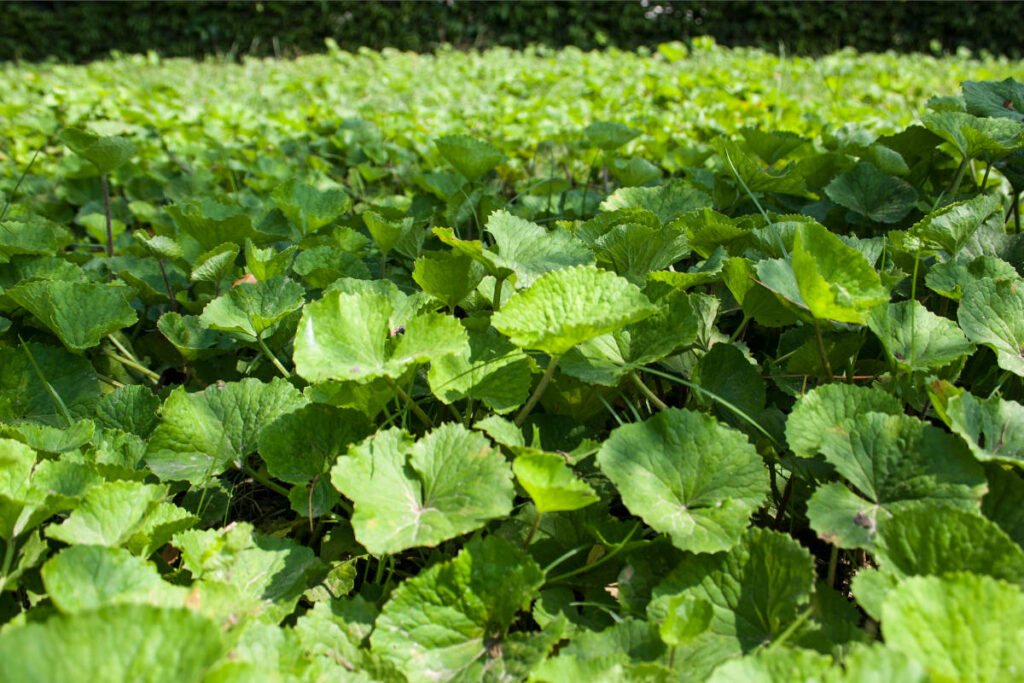
2. Fertility Management Through Composting & Organic Inputs
The key to any sustainable/regenerative system is to close the loop on waste produced within the farming system.
One of the best soil building processes to do this is through composting, cover cropping as mentioned above, and using farm-based natural fertilizers.
Let’s start with composting.
When done properly, you have a biologically rich input that not only returns nutrients to the soil but enriches the microbial life that allows the soil to produce abundantly.
All compost is maintained on-site, contributing to each farm’s self-sufficiency and enhancing their soils.
We also implement short-term rotational grazing or foraging with Desi Cows.
Managed grazing enhances plants’ nutrition via cow urine, and the microbial inoculation from cow manure fast-tracks the soil healing process.
The cows also provide the farmer and his/her family with a critical food source from milk and milk products.
This offers multiple functions that benefit the entire farm ecosystem, including the humans living there.
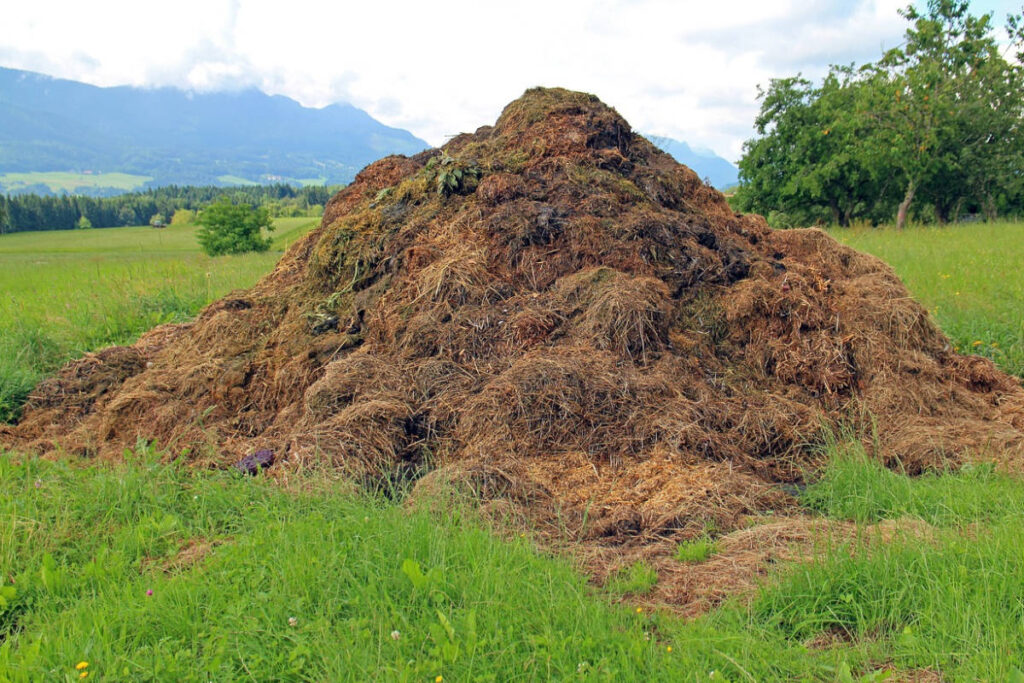
3. Agroforestry
Agroforestry is another essential ingredient in Organic India’s soil-building recipe.
According to the Food and Agriculture Organization of the United Nations, agroforestry is defined as:
“A collective name for land-use systems and technologies where woody perennials (trees, shrubs, palms, bamboos, etc.) are deliberately used on the same land-management units as agricultural crops and/or animals, in some form of spatial arrangement or temporal sequence.
The implied goal of agroforestry is to help create a more resilient farming system through ecological diversity, and to achieve higher socially productive output from the land itself.
On Organic India’s farms, trees (usually Moringa) and live hedges on land boundaries are implemented between fields to maximize land use, harvest additional beneficial crops in what would typically be unused soil, and provide physical protection from natural elements like wind and excess rain that may otherwise degrade soil conditions.
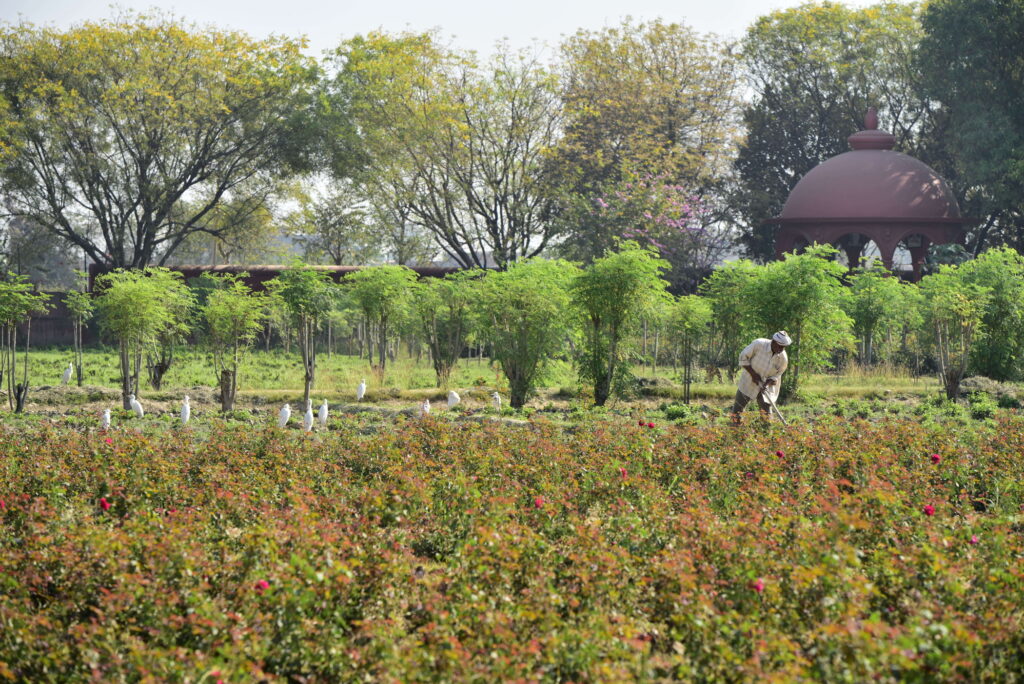
4. Intercropping or Companion Planting
Intercropping or companion planting refers to an agricultural practice in which two or more crops are grown in between each other in the same area.
When done correctly, the plants growing in close proximity do not compete for nutrients or sunlight. It also can help repel insect pests and increase flavor.
In essence, the intercropped plants assist each other in:
- Growing healthier and stronger
- Developing more flavorful
- And developing a richer source of beneficial plant compounds
This results in improved soil fertility and can dramatically increase crop yields.
For example, our farmers have succeeded in multi-layer farming of Moringa tress (Morninga oliefera) with Brahmi Centella (Centella asiatica/ Gotu Kola).
The Brahmi Centella benefits the Moringa by covering the soil and conserving moisture, thus requiring less Irrigation, maintaining the soil microbial community, and producing two crops harvested in one space.
This has allowed our farmers to harvest both crops every 65-70 days and double their income without additional land.
Final Thoughts on Regenerative Agriculture in Herb Farming
Because soil is life for plants, animals, and people, Organic India believes soil should be treated as a living-breathing organism.
By implementing these soil building processes, we get higher productivity from our lands—which is a welcome by-product—but more importantly, we are encouraging the health of the entire ecosystem, including land, livestock, farmers, and community.
Who knew tending soil could have so many incredible immediate and downstream benefits?

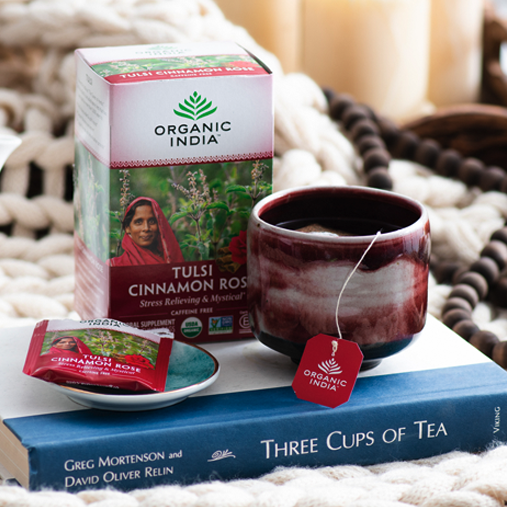
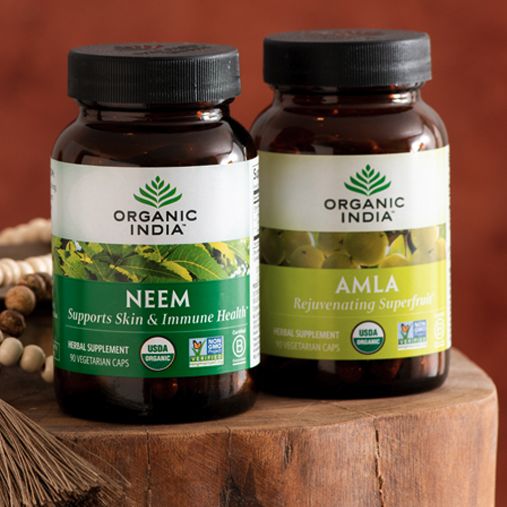
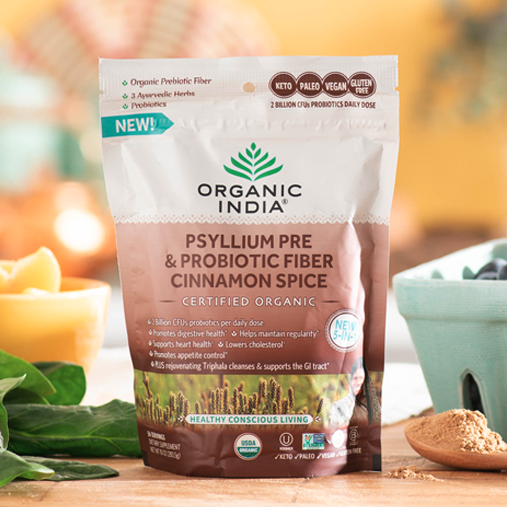

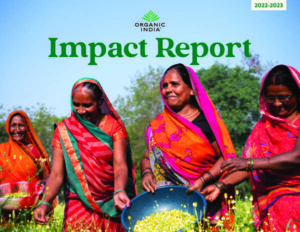
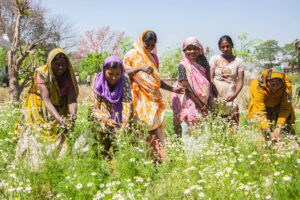


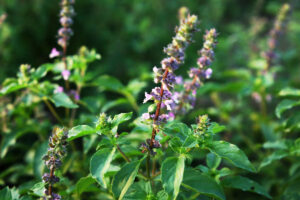
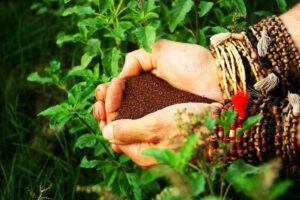
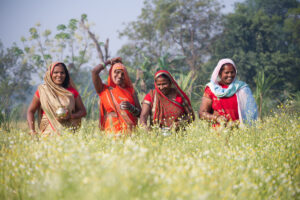



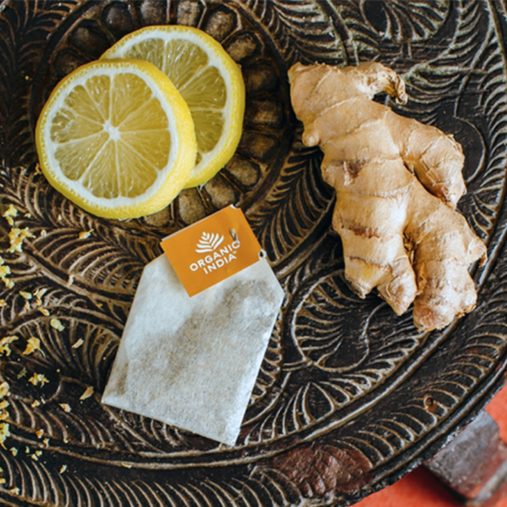

 Kristen Boye is a freelance natural health and green living writer, copywriter, and editor. Kristen was raised on an organic farm in British Columbia which inspired her life’s work. She holds a Bachelor’s Degree in Natural Health, is a Certified Natural Foods Chef, a medicinal herb farmer, natural foods advocate, and is obsessed with writing, homesteading, researching, regenerative agriculture, and words in general. Kristen lives with her husband and two children on their medicinal herb farm in Western North Carolina. Visit her online at:
Kristen Boye is a freelance natural health and green living writer, copywriter, and editor. Kristen was raised on an organic farm in British Columbia which inspired her life’s work. She holds a Bachelor’s Degree in Natural Health, is a Certified Natural Foods Chef, a medicinal herb farmer, natural foods advocate, and is obsessed with writing, homesteading, researching, regenerative agriculture, and words in general. Kristen lives with her husband and two children on their medicinal herb farm in Western North Carolina. Visit her online at: